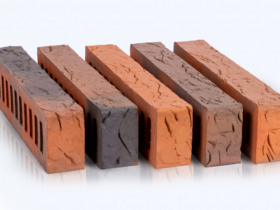Finishing work with walls almost always includes plastering. And what do you think, why plaster the facades of buildings and houses? In fact, external plaster is needed not only for economic reasons, but from a technical point of view, and even from aesthetic! In the last situation, with the help of plaster, you can very well ennoble the appearance of the facade of the building, create an excellent basis for further decoration. Speaking in the technical context, then the facade plaster helps to protect walls from various kinds of atmospheric phenomena and precipitation. In addition, unicustantial external surfaces of the walls can easily cause defects indoors – wetting walls, the appearance of mold, etc. P.
It is worth noting that the external plastering of the walls is always performed only by high -quality building materials that have a reliable cement base. GIPS here is completely not suitable, since it interacts perfectly with moisture, while losing its strength characteristics. All plasters for external work should: to be high -strength, to adapt well with the bases, to be homogeneous, to have a small capillary water absorption, and should also pass steam well and be persistent to atmospheric phenomena.









